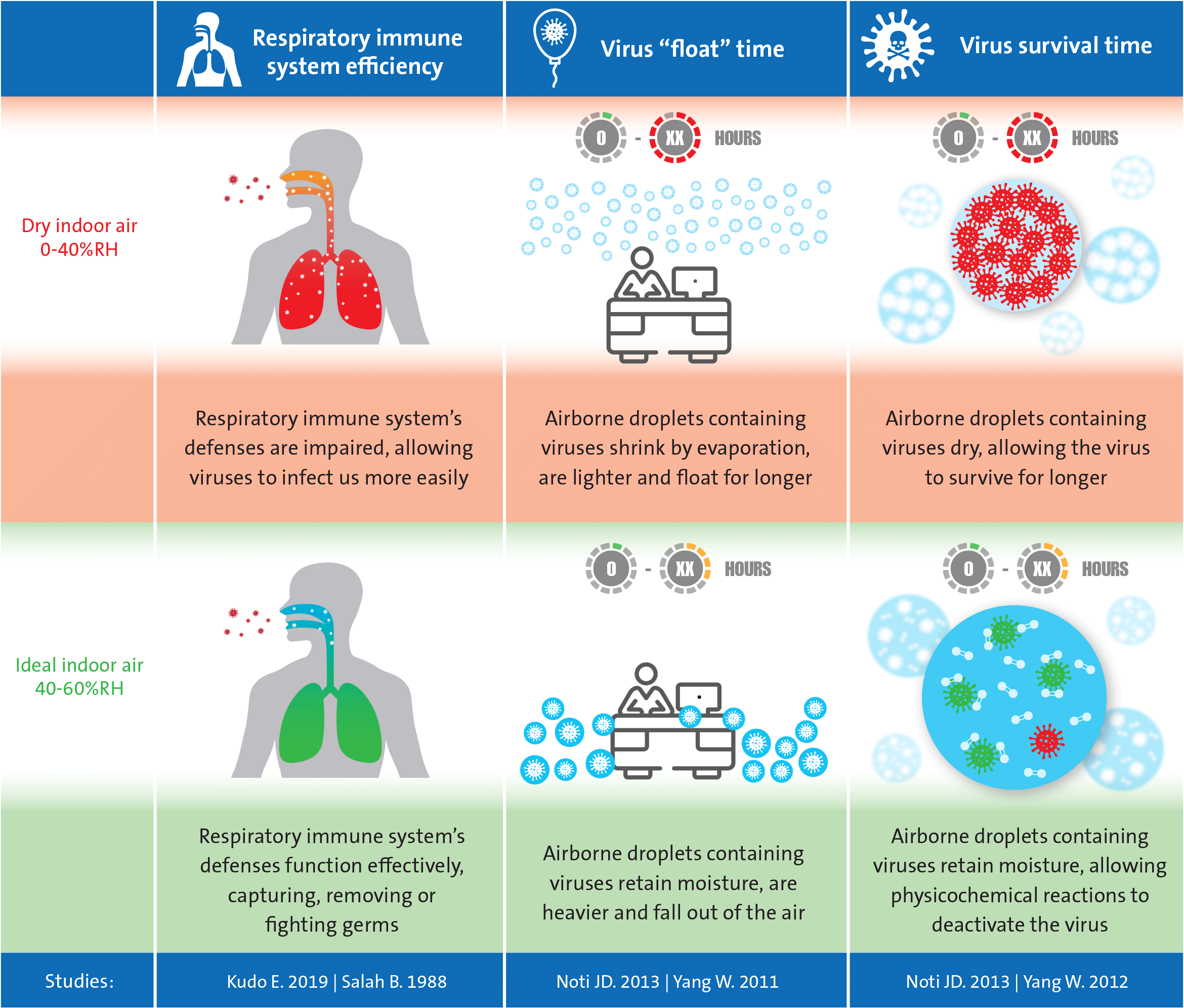A new petition calls on the World Health Organisation (WHO) to take swift and decisive action to establish global guidance on indoor air quality, with a clear recommendation on the minimum lower limit of air humidity in public buildings. This critical move would reduce the spread of airborne bacteria and viruses in buildings and protect public health.
Supported by leading members of the global scientificand medical community, the petition is designed to not only increase global awareness among the public on the crucial role indoor environmental quality plays in physical health, but also to call emphatically on the WHO to drive meaningful policy change; a critical necessity during and after the COVID-19 crisis.
One of the leading forces in the charge for a globally recognised 40-60%RH guideline for public buildings, Dr Stephanie Taylor, MD, Infection Control Consultant at Harvard Medical School, ASHRAE Distinguished Lecturer & Member of the ASHRAE Epidemic Task Group commented: “In light of the COVID-19 crisis, it is now more important than ever to listen to the evidence that shows optimum humidity can improve our indoor air quality and respiratory health.
‘It is time for regulators to place management of the built environment at the very center of disease control. Introducing WHO guidelines on minimum lower limits of relative humidity for public buildings has the potential to set a new standard for indoor air and improve the lives and health of millions of people.”

Science has shown us three reasons why we should always maintain 40-60%RH in public buildings like hospitals, schools and offices, throughout the year.
The World Health Organization sets guidance for indoor air quality on issues such as pollution and mold. It currently offers no recommendations for a minimum humidity level in public buildings.
If it were to publish guidance on minimum levels of humidity, building standards regulators around the world would need to update their own requirements. Building owners and operators would then take steps to improve their indoor air quality to meet this minimum humidity level.
This would lead to:
Respiratory infections from seasonal respiratory viruses, such as flu, being significantly reduced.
Thousands of lives saved every year from the reduction in seasonal respiratory illnesses.
Global healthcare services being less burdened every winter.
The world’s economies massively benefiting from less absenteeism.
A healthier indoor environment and improved health for millions of people.
Source: heatingandventilating.net
Post time: May-25-2020







